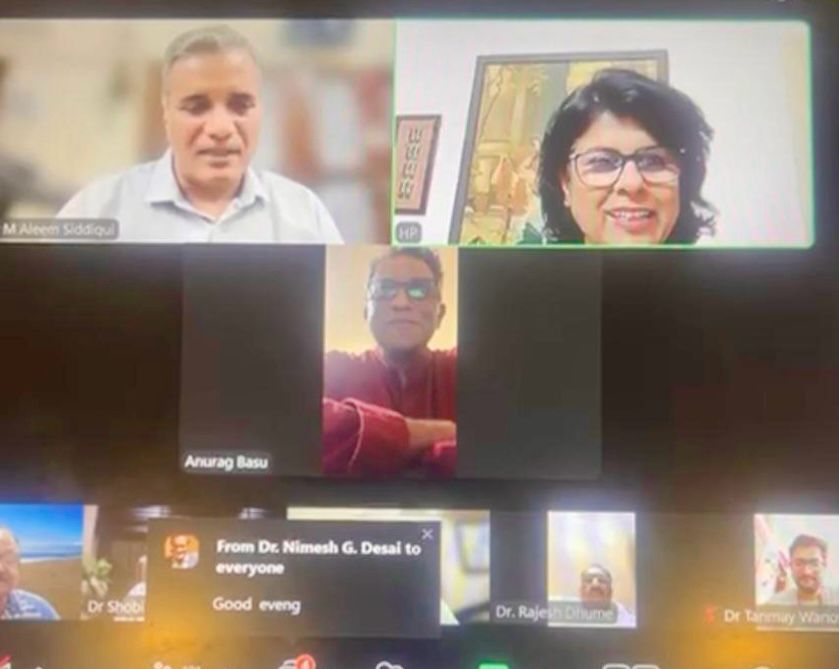By: Rakesh Lohumi, Sr. Advisor & Sr. Editor-ICN Group
The hills of Uttrakhand reverberate with melodious notes of Hindustani classical music as the Kumaonis celebrate the festival of Holi in a way very different from the rest of the country.
Folk songs are integral to Holi , which is celebrated as the “festival of colours” all over. It is the rich infusion of classical music in the Holi songs that lends the festival altogether a different dimension in the Kumaon region. The unique tradition of singing Holi songs based on different classical ragas virtually makes it a celebration of “Sur” (musical notes) and “Taal” (rhythm).
The festival of music commence on the first Sunday of Hindu Lunar month of Paush towards the end of December when the winter is at its peak with “Baithaki Holi” (musical sittings in the evening) and culminate with Holi in March. The celebration is spread across the entire winter, making it the longest festival.
Accomplished vocalists accompanied by harmonium and “tabla” regale the gatherings at these sittings with melodious classical holi songs, warming up the cold winter evenings. The Baaithaki Holi sittings start in the evening and continue well past midnight. The sittings usually start from temples and subsequently the venue keeps shifting from one home to the other as enthusiasts vie with each other to play the host.
Well versed in classical music the main singers adhere to the timing of classical ragas. The most common ragas in which holi songs are composed include Kafi, Jungla Kafi, Bhairvi , Bihag, Jaiajaiwanti, Kalyan, Adaana ,Sahaana, Bageshwari, Dhamar, Paraj amd Bhimpalasi.
The main singer leads the song and later others join one after the other and this tradition enables youth also learn about ragas and the nuances of classical music without any formal training. They also become proficient in playing harmonium and “tabla”.
Most of the songs are religious in nature and related to the life of Ram and Seeta and Radha and Krishna with spiritual overtones. The lyrics are in Hindi, Brajbhasha and Kumaoni languages. In the interior villages the people sit around bonfires to sing ragas all night.
There is no definite information about the origin of the tradition of Baithaki Holi. Some researchers maintain that it started in 13th century during the Chand dynasty when the reigning king asked Muslim and Sufi singers to sing during Holi. However, some experts differ and assert that the tradition is only about two centuries old and began with Ustad Amanat Husain of Rampur who came to Almora and started singing classical songs in winters.
The Bithaki Holi is still the exclusive preserve of the males, though there has been some changes in the style and duration of rendition. The earlier longer versions of classical Holi songs are becoming rare and the new generation singers are more comfortable with shorter format with each song lasting 5 to 10 minutes. The paucity of time in the modern busy life is also a factor.
The classical Holi fever picks up after Basant and a week before the Holi begins the “Khadi Holi” , a fascinating mix of group dance and folk music. Unlike Baithki holi , the singers move in circles in dancing movements. The songs of the Khari Holi are sung in chorus by the participants attired in white kurtas and pyjamas and they dance to the beat of folk music instruments. The men move in groups from house to house.
“Mahila Holi” also begins around this time. The gatherings are similar to Baithaki Holi, except that they are composed exclusively of women. The Mahila Holi songs are more in the form of folk and not classical like Baithaki Holi. The women mostly use Dholak in place of “table” for rhythm and sittings are dominated by group singing.
The tradition of Baithaki Holi allows people, irrespective of their social status and age, an opportunity to come together making it more of a social affair. It helps to strengthen the social bonding and the community feeling among the people. Kumaonis celebrate holi in this fashion all over the country and even abroad.




